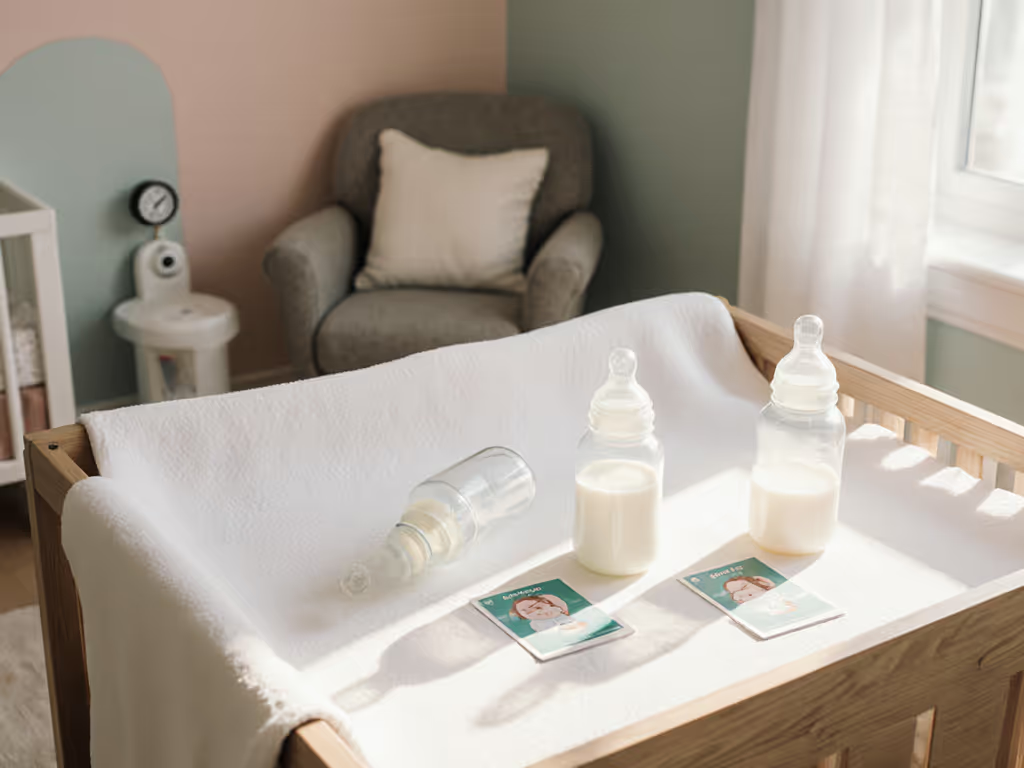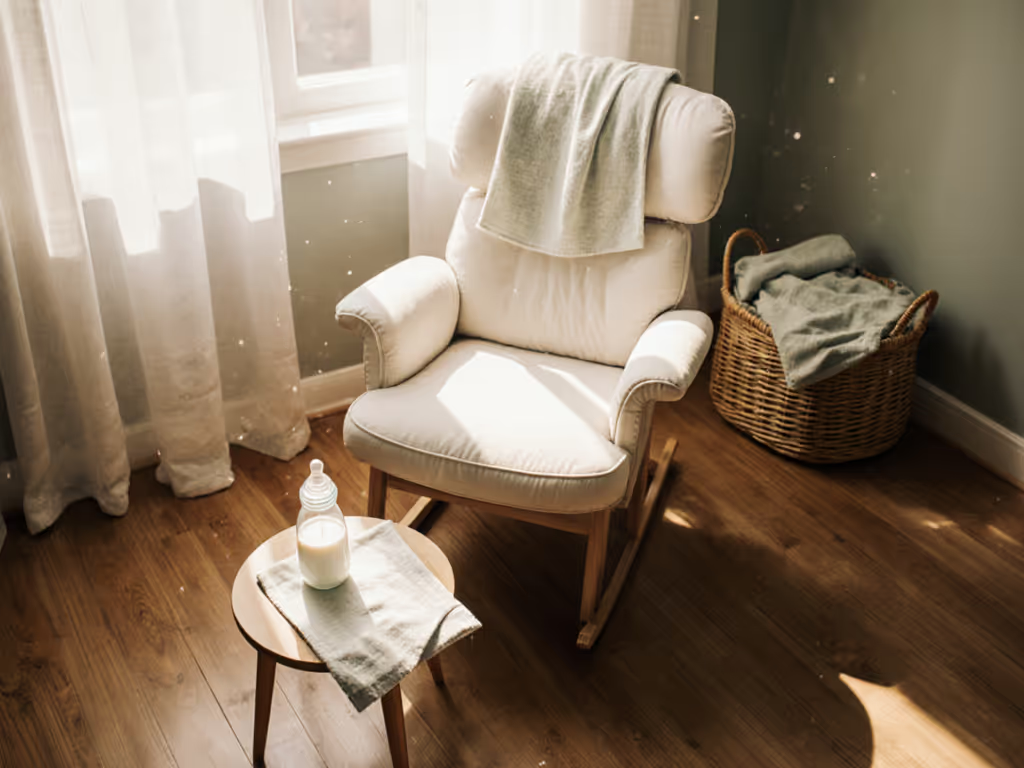
Night Feeding Bottle: Everything You Need to Know
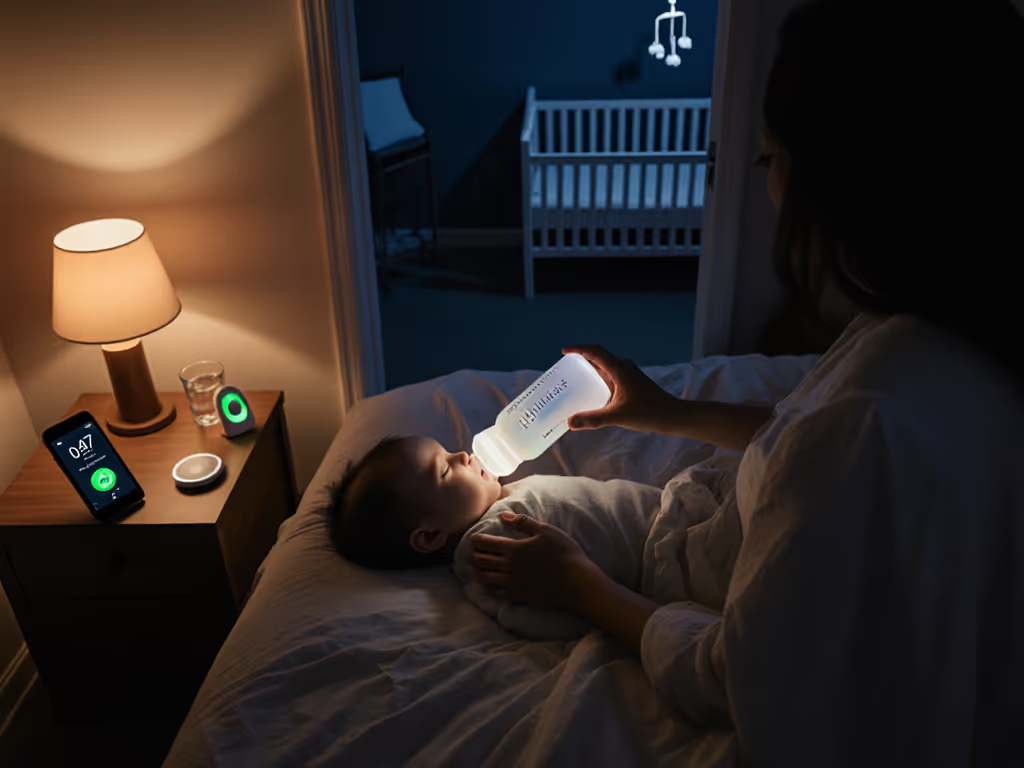
Did you know that nearly half of parents report waking up multiple times a night to feed their baby? Finding ways to make nighttime feedings smoother can make a huge difference in your sleep and your baby's wellbeing. Specialized night feeding bottles now offer features that help prevent spills, reduce air intake, and keep milk at just the right temperature, giving parents practical support when every moment of rest counts.
Key Takeaways
| Point | Details |
|---|---|
| Specialized Design | Night feeding bottles feature unique elements such as low-flow nipples and quiet materials, ensuring efficient, gentle nighttime feedings. |
| Material Selection | Choosing BPA-free, safe materials like glass or medical-grade silicone is crucial for infant safety and hygiene. |
| Compatibility | Consider bottle compatibility with breast pumps and sterilization equipment to simplify feeding transitions. |
| Individualized Choices | Testing multiple bottle designs is essential, as individual baby preferences significantly influence successful nighttime feeding. |
Defining Night Feeding Bottles for Babies
A night feeding bottle is a specialized feeding tool designed specifically to help parents and caregivers provide nutritional sustenance to infants during nighttime hours with minimal disruption to both baby and caregiver sleep cycles. Unlike standard daytime bottles, these nighttime feeding bottles are engineered with features that support quiet, efficient, and comfortable feeding experiences in low-light environments.
Typically, night feeding bottles incorporate several key design elements that distinguish them from standard baby bottles. These specialized bottles often feature low-flow nipples that control milk or formula release, reducing the chances of overfeeding or causing excessive air intake. Some night feeding bottles come with built-in temperature indicators or are crafted from materials that help maintain consistent milk temperatures, which is crucial during middle-of-the-night feedings when precision and calm are paramount.
The primary characteristics of night feeding bottles include:
- Reduced nipple flow rates to prevent rapid feeding
- Soft, quiet materials that minimize noise during nighttime use
- Ergonomic designs that allow easy handling in dim lighting
- Anti-colic mechanisms to reduce digestive discomfort
- Lightweight construction for simplified nighttime feeding management
Ultimately, night feeding bottles serve a critical function in infant care by providing a practical solution for parents seeking to maintain consistent nutrition schedules while minimizing sleep disruptions. By understanding their unique design and purpose, parents can make informed choices that support both their baby's nutritional needs and their own rest and well-being during challenging early parenting stages.
Types and Features of Night Feeding Bottles
Night feeding bottles come in diverse material compositions and specialized designs, each tailored to address specific infant feeding challenges and parental preferences. From traditional hard plastic to modern silicone and stainless steel options, these bottles offer unique characteristics that support comfortable and efficient nighttime feeding experiences for both babies and caregivers.
The primary types of night feeding bottles include:
Here's a comparison of popular night feeding bottle types and their key features:
| Type of Bottle | Key Features | Material Options |
|---|---|---|
| Standard | Traditional nipple<br>Simple design | Plastic<br>Glass |
| Anti-Colic | Ventilation system<br>Reduces air intake | Plastic<br>Silicone |
| Wide-Neck | Easy cleaning<br>Natural latch feel | Plastic<br>Glass<br>Silicone |
| Self-Sterilizing | Built-in sterilization<br>Quick sanitization | Plastic |
| Temperature-Sensitive | Color-change indicator<br>Monitors milk temp | Plastic<br>Silicone |
- Standard Bottles: Basic design with traditional nipple and straightforward construction
- Anti-Colic Bottles: Featuring advanced ventilation systems to reduce air intake
- Wide-Neck Bottles: Designed for easier cleaning and more natural latch simulation
- Self-Sterilizing Bottles: Integrated mechanisms for quick and convenient bottle sanitization
- Temperature-Sensitive Bottles: Include color-changing indicators to monitor milk temperature
Material considerations play a crucial role in bottle selection, with each substance offering distinct advantages. Hard plastic bottles provide durability and lightweight design, while glass bottles ensure chemical-free feeding experiences. Stainless steel options offer excellent temperature retention, and silicone bottles provide flexibility and soft texture.
Parents should consider factors like durability, ease of cleaning, potential chemical interactions, and their baby's specific feeding needs when selecting the most appropriate night feeding bottle.
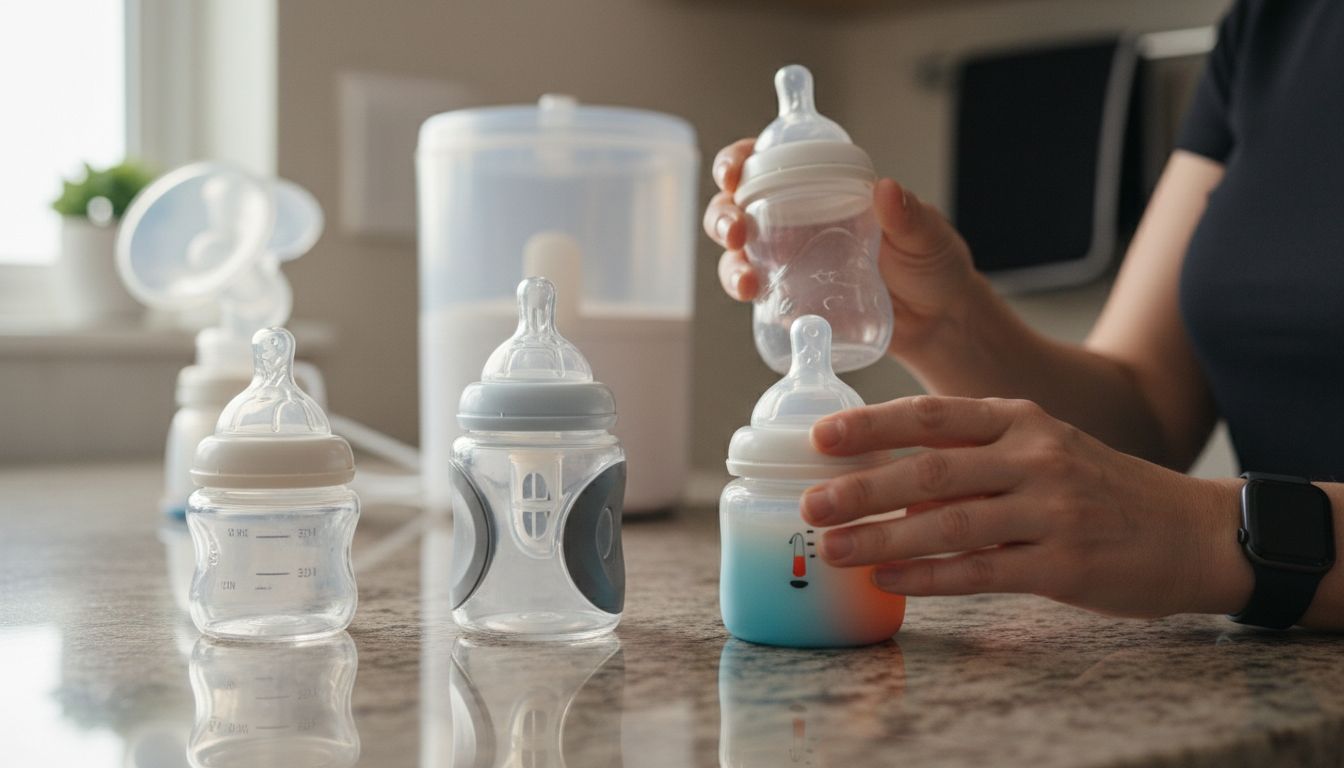
Modern night feeding bottles also incorporate sophisticated ergonomic features to enhance nighttime feeding comfort. These include soft-touch exteriors, anti-slip grips, and contoured shapes that facilitate one-handed feeding in low-light conditions.
Some advanced models integrate smart technology like built-in temperature sensors and leak-prevention mechanisms, transforming a routine feeding session into a seamless, stress-free experience for sleep-deprived parents seeking efficient nutritional solutions for their infants.
How Night Feeding Bottles Work at Night
Night feeding bottles are engineered with specialized physiological design principles that support seamless, minimally disruptive nutrition delivery during sleep cycles. These innovative feeding tools combine strategic structural elements and ergonomic features to ensure babies can consume essential nutrients with minimal awakening, allowing both infant and caregiver to maintain optimal sleep patterns.
The positioning technique is critical for effective night feeding. Experts recommend the side-lying feeding position, where parents hold the bottle parallel to the bed, enabling the baby to drink comfortably while remaining in a relaxed state. This approach reduces stimulation and helps facilitate a smooth transition back to sleep. Key positioning strategies include:
- Keeping the baby slightly elevated
- Maintaining a consistent, gentle angle
- Supporting the baby's head and neck
- Minimizing movement and noise
- Ensuring a comfortable, supportive environment
Advanced night feeding bottles incorporate technical innovations specifically designed to enhance nighttime feeding experiences. Anti-colic mechanisms reduce air intake, preventing uncomfortable gas and digestive disruptions that might wake the baby. Specialized slow-flow nipples control milk release, preventing overfeeding and supporting natural suckling rhythms. Some models feature soft, quiet materials and temperature-regulating technologies that create a soothing, consistent feeding environment conducive to maintaining sleep continuity.
Successful night feeding requires a holistic approach that combines bottle design, feeding technique, and understanding of infant sleep patterns. By selecting bottles with intelligent design features and practicing calm, minimally invasive feeding techniques, parents can transform nighttime nutrition from a potential sleep interruption into a smooth, almost unconscious process that supports both the baby's nutritional needs and the family's overall sleep quality.
Safety, Hygiene, and Compatibility Considerations
Safety and hygiene are paramount when selecting and using night feeding bottles for infants, requiring parents to navigate complex considerations of material composition, sterilization techniques, and potential health risks. Since 2011, regulatory bodies like the European Commission have implemented strict guidelines prohibiting harmful chemicals like Bisphenol A (BPA) in baby bottles, emphasizing the critical importance of choosing safe, non-toxic feeding equipment.
Key safety and hygiene considerations for night feeding bottles include:
- Selecting BPA-free materials
- Choosing bottles made from chemically inert substances
- Using glass or medical-grade silicone options
- Implementing rigorous sterilization protocols
- Regularly inspecting bottles for wear and damage
- Avoiding bottles with potential chemical leaching risks
- Checking for precise manufacturing standards
Compatibility becomes a crucial factor in bottle selection, particularly for parents managing multiple feeding methods or transitioning between breast and bottle feeding. Parents must consider nipple flow rates, bottle shapes, and material interactions with breast pumps, formula types, and sterilization equipment. Glass bottles offer superior hygiene benefits, being easier to clean and less likely to retain formula residues, while also providing a chemically neutral feeding surface that minimizes potential contamination risks.
Comprehensive bottle safety extends beyond material selection to include proper maintenance and handling practices. Parents should develop systematic cleaning routines, use specialized bottle sterilization equipment, and remain vigilant about potential manufacturing defects or material degradation. By understanding these intricate safety considerations and adopting a proactive approach to bottle selection and maintenance, caregivers can create a safe, hygienic feeding environment that supports their infant's nutritional needs and overall health.
Choosing the Right Night Feeding Bottle
Selecting the ideal night feeding bottle is a nuanced process that requires careful consideration of multiple factors unique to each infant's specific nutritional and developmental needs. Unlike daytime feeding, nighttime bottle selection demands additional attention to design elements that support minimal disruption to sleep cycles and maximize feeding efficiency.
Critical factors to evaluate when choosing a night feeding bottle include:
- Nipple Flow Rate: Slow-flow options that prevent overfeeding
- Material Composition: BPA-free, safe substances
- Anti-Colic Design: Mechanisms to reduce air intake
- Noise Reduction: Soft materials that minimize feeding sounds
- Ergonomic Shape: Easy handling during low-light conditions
- Temperature Retention: Consistent milk temperature
- Compatibility: Works with existing breast pumps and sterilization equipment
Independent research suggests that no single bottle brand universally outperforms others, emphasizing that individual baby preferences play a significant role in successful bottle selection. Parents should adopt an experimental approach, testing multiple bottle designs to discover which best suits their infant's unique feeding style. Factors like mouth shape, suckling rhythm, and individual comfort contribute substantially to finding the perfect nighttime feeding solution.
Ultimately, choosing the right night feeding bottle involves balancing technical specifications with intuitive understanding of your baby's specific needs. Observing your infant's response to different bottle designs, monitoring feeding comfort, and remaining flexible in your approach will help you navigate this important parenting challenge. Remember that what works perfectly for one baby might not be ideal for another, making patience and attentive observation key to successful nighttime feeding strategies.
Find the Perfect Night Feeding Bottle for Your Baby's Needs
Feeding your baby at night can be challenging when you want to minimize disruptions and keep your little one comfortable. This article highlights critical concerns such as controlling nipple flow rate, preventing colic, and maintaining temperature which are essential for peaceful night feedings. If you are searching for solutions that address these exact challenges while ensuring safety and comfort, it's time to explore tailored bottle options that align with your baby's unique feeding style.
At Family Bottle Fit, we provide thoughtful guidance and practical tools to help you select and customize the ideal night feeding bottle. Our detailed guides cover how to choose the right nipple flow, materials free from harmful chemicals, and ergonomic designs that keep nighttime feedings calm and effortless. Don't let restless nights become routine. Visit Family Bottle Fit today to start improving your baby's feeding experience and reclaim those peaceful hours with expert tips and personalized recommendations.
Frequently Asked Questions
What are night feeding bottles designed for?
Night feeding bottles are specialized feeding tools that help parents provide nutrition to infants during nighttime hours while minimizing sleep disruptions for both the baby and caregiver.
What features distinguish night feeding bottles from standard baby bottles?
Night feeding bottles often have low-flow nipples, quiet materials, ergonomic designs for easy handling, anti-colic mechanisms, and lightweight construction, all aimed at creating a comfortable feeding experience in low-light conditions.
How do you choose the right night feeding bottle for your baby?
To choose the right night feeding bottle, consider factors such as nipple flow rate, material composition (BPA-free), anti-colic features, noise reduction qualities, ergonomic shape, and temperature retention capabilities.
What are the safety and hygiene considerations for using night feeding bottles?
Important safety and hygiene considerations include selecting BPA-free materials, implementing sterilization protocols, regularly inspecting bottles for wear, and ensuring compatibility with breast pumps and sterilization equipment.
Recommended
Related Articles

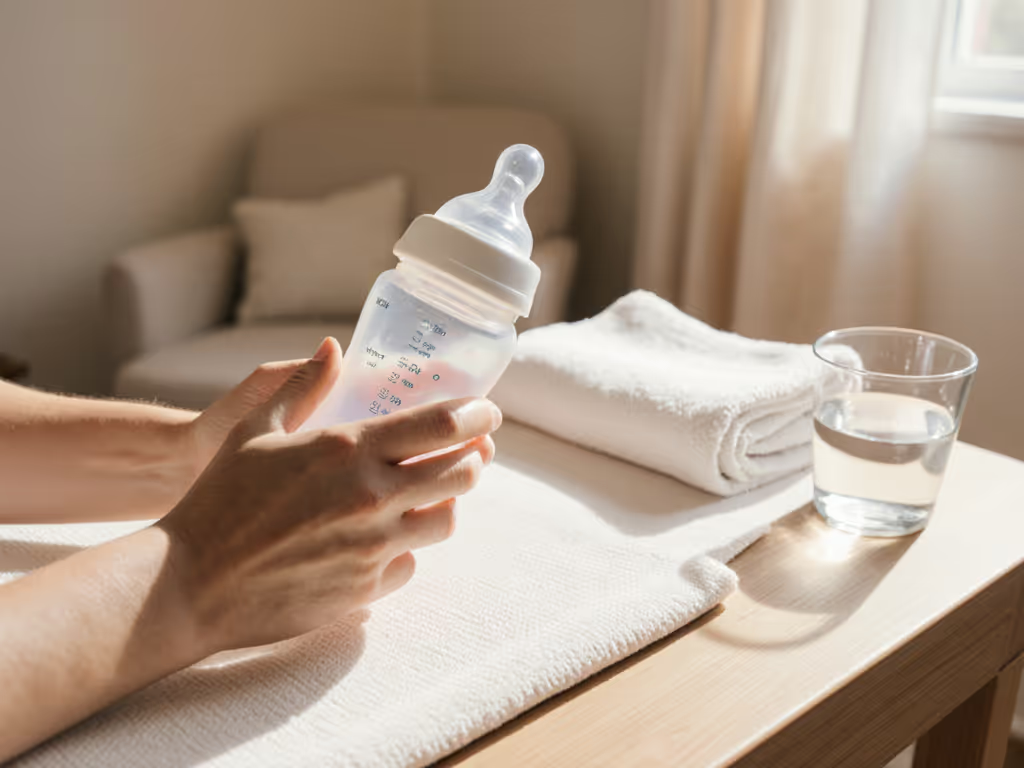
Why Slow Flow Nipples Matter: Complete Guide

Step-by-Step Guide to Preventing Nipple Confusion Easily
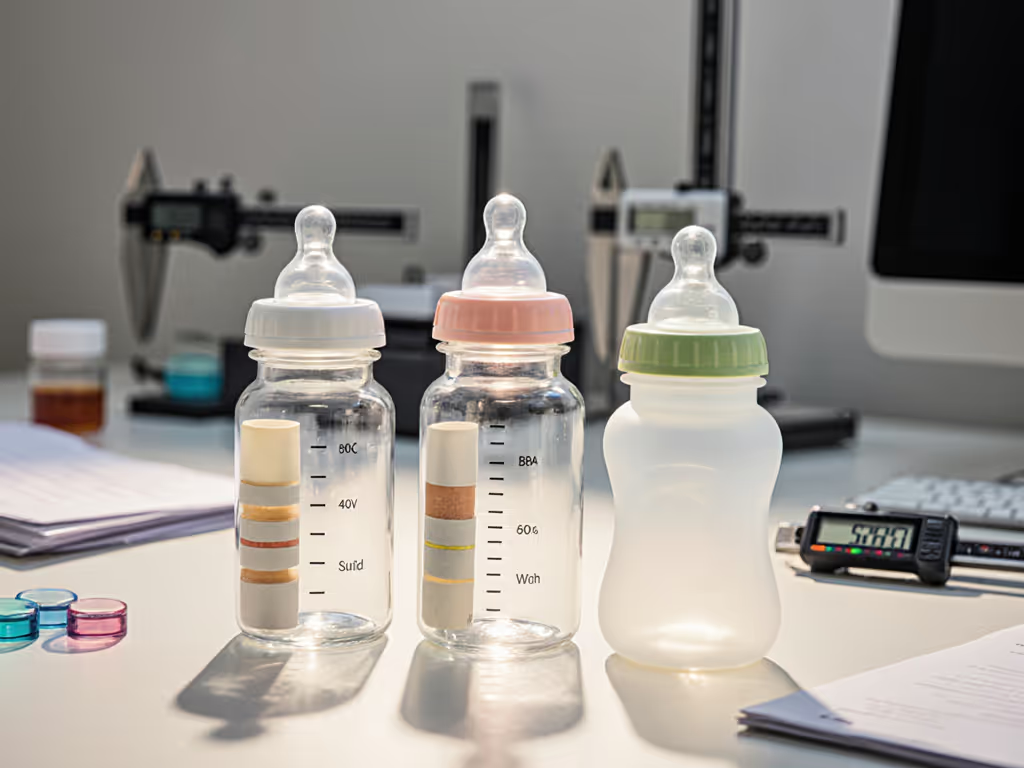
Complete Guide to the Role of Bottle Construction
